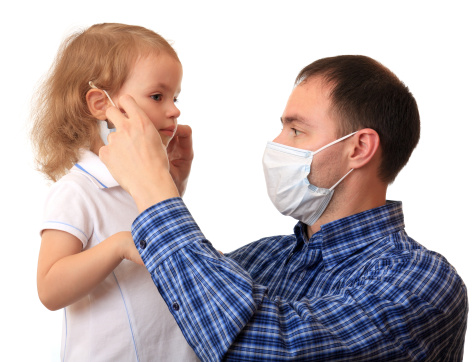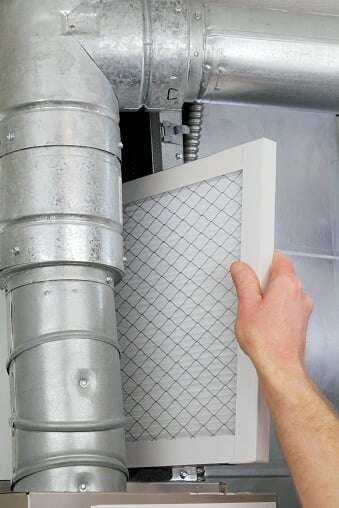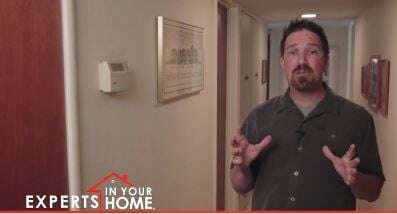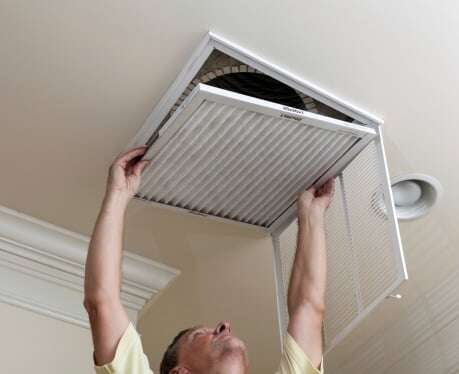 When it's working properly, it keeps you so comfortably warm and healthy that you probably take it for granted, which is a good thing.
When it's working properly, it keeps you so comfortably warm and healthy that you probably take it for granted, which is a good thing.
But when it's not working as it should, it can cause you to cough, sneeze and wheeze. It can dry out the air so badly that it can give you an electrical shock after you shuffle across the carpet. It can cause your houseplants to wither and your wood floors and cabinets to splinter.
In the most dire circumstance – carbon monoxide poisoning – it can trigger headaches, dizziness, nausea, vomiting, heart and brain damage and even death.
Don't ever let anyone suggest to you that your heating system has little to no effect on your home's indoor air quality. In fact, the two are intricately linked. When your heating system is operating at peak efficiency and you maintain it properly, it should keep you so comfortably warm and healthy that you take it for granted. And that's a very good thing.
Lest you think Experts In Your Home is overstating the case, let's begin with a short primer on how your gas furnace works, step by step:
Furnace Basics
- When the temperature in your home falls below the thermostat setting, the thermostat sends a low-voltage electrical signal to the furnace.
- The motor begins to purge the heat exchanger – the main component of your furnace – of any leftover gas.
- After a brief warm-up period, the gas valve opens and ignition occurs to light the burner inside the combustion chamber. This creates heat in the heat exchanger, around which the air flows.
- As the furnace heats up, the blower motor turns on and sends the heated air through the ductwork.
Here are two key points to remember: if your air filter is clogged and dirty, it will restrict air flow, which can do everything from seriously impugn your home's indoor air quality to cause your furnace to shut down in frustration. (Any dirt that has accumulated on the furnace coils further restricts air flow).
- Once your indoor air temperature reaches the setting of the thermostat, the gas valve closes and the burners turn off.
- The blower continues to run until the all the warm air in the ducts is distributed.
- When the blower stops, the heating cycle ends.
Take Proactive Measures
Once you grasp what can go wrong after your thermostat sends that low-voltage signal, you'll want to take proactive measures with regard to the care of your heating system by:
- Calling Experts In Your Home immediately if you notice that the furnace flame has turned yellow or see flakes of rust near your furnace. Both conditions signify a crack in the heat exchanger and can lead to dangerously high emissions of carbon monoxide in your home.
- Remaining vigilant about your yearly furnace checkup with Experts In Your Home so that we can clean and lubricate the components to keep it running cleanly and efficiently.
- Scheduling a special inspection with Experts In Your Home if you suspect that your furnace has been improperly sized or installed (usually evidenced by short cycling).
- Checking your furnace filter every month and replacing it when it's so dirty that you can no longer see through it.
- Upgrading to a higher quality filter with tighter weaves, which will trap tinier contaminants. Follow the MERV rating; the higher the Minimum Efficiency Reporting Value, the more efficient the air filter.
If you suspect “foul play” on the part of your furnace, call Experts In Your Home. We'll get to the bottom of whatever is ailing it so that it keeps you comfortably warm and healthy and you take it for granted every single day.
Do you know what to do if your heating system breaks? Download the free ebook below to learn the questions you should ask!








